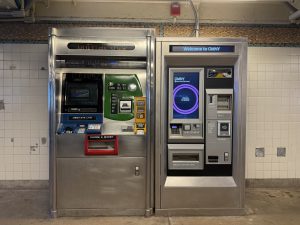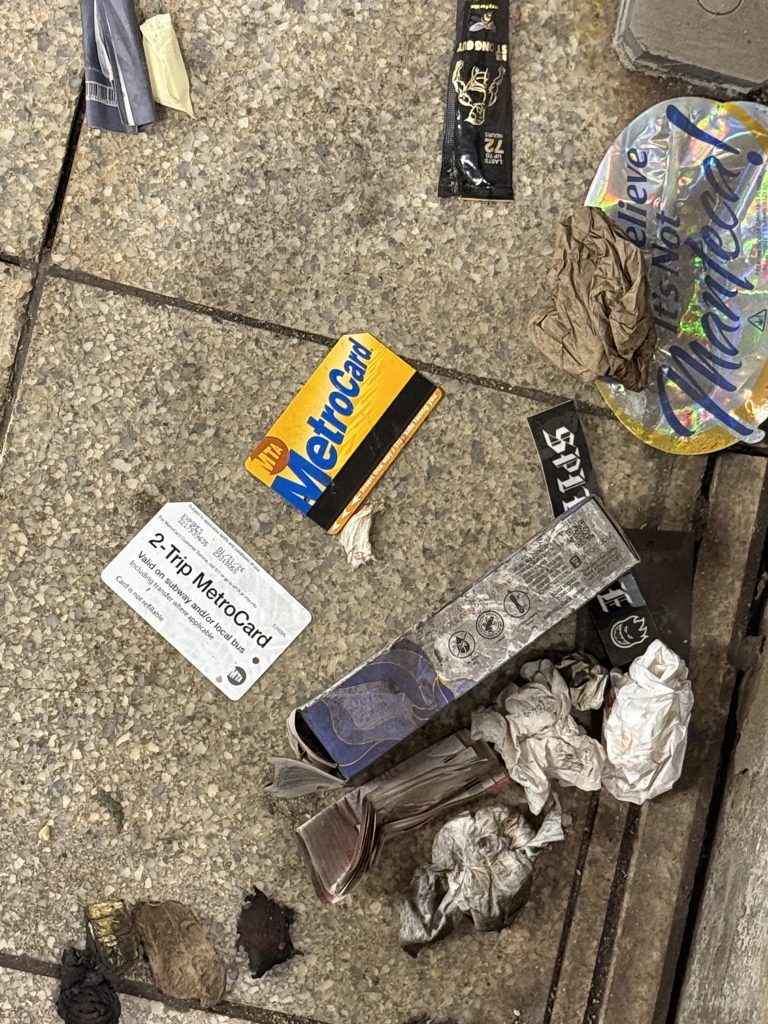
Courtesy OMNY
By: MOHAMED FARGHALY
mfarghaly@queensledger.com
After more than three decades of service, the iconic MetroCard will be phased out by the
Metropolitan Transportation Authority (MTA), with the final day for sales and
distribution set for December 31, 2025. The MTA’s transition to its contactless tap-and-
go payment system, OMNY, will mark the end of the swipe system that has been a staple
of New York City’s public transit system since 1994.
The move is part of a broader effort to modernize the MTA’s fare collection system,
reduce operational costs, and make the riding experience more convenient for customers.
The OMNY system, which stands for One Metro New York, allows riders to use
smartphones, contactless credit and debit cards, or OMNY-specific cards to pay their fare
directly at the turnstiles or on buses, eliminating the need for physical MetroCards.

In announcing the change, MTA Chair and CEO Janno Lieber explained that it was time
for the transit system to fully embrace the future. OMNY, which was first introduced in
2019, has already become the preferred payment method for many New York City
commuters. With approximately 65% of subway and bus riders now using OMNY, the
transition to a cashless, digital fare system is well underway. This percentage includes
85% of full-fare customers and 55% of reduced-fare customers, and that number is
expected to rise rapidly as MetroCard sales come to an end.
While MetroCards have been synonymous with New York City transit for over three
decades, the shift to OMNY represents a step forward in the MTA’s modernization
efforts. The tap-and-go system simplifies fare payment by allowing riders to use their
mobile phones or contactless cards, removing the need to carry and reload a MetroCard.
The OMNY system also includes a fare-capping feature, which automatically ensures that
riders get the best value for their travel. Once a rider’s weekly fare hits $34 for full-fare
customers or $17 for reduced-fare customers, they can continue to travel for free for the
rest of the week, providing a significant benefit for frequent riders.
The fare-capping feature is expected to save riders millions of dollars annually. In fact,
the MTA reports that nearly 1 million riders each month reach the fare cap, with
customers saving more than $8 million per month in free trips. This is particularly
advantageous for tourists, occasional riders, and local commuters who no longer need to
purchase weekly or monthly cards in advance. Unlike the MetroCard system, which
required customers to prepay for multiple trips in order to receive discounts, the OMNY
system ensures that users pay only for the rides they take and never forfeit unused
balances.
For those who prefer to use a physical card, OMNY cards can be purchased for $1 and
loaded with funds at a variety of locations, including subway stations, online, and at retail
partner locations throughout the city. By the fall of 2025, OMNY vending machines will
be available at all 472 subway stations, making it easier for commuters to obtain and load
their cards. Retailers will no longer sell MetroCards after the fall of 2025, as all
customers will be directed toward the new OMNY payment system.

MetroCards will remain valid for travel through 2026, but the MTA is urging riders to
transition to OMNY as soon as possible to avoid any disruption to their daily commute.
Any remaining balances on MetroCards will be eligible for transfer or reimbursement for
up to two years after the MetroCard’s expiration date. Riders can transfer funds from
their MetroCards to OMNY cards at Mobile Sales Van locations, Customer Service
Centers (CSCs) in subway stations, or at designated locations in Lower Manhattan.
Over the years, more than 400 limited-edition MetroCards have captured iconic moments
in New York City’s history, from pop culture to sports, including designs honoring
Notorious B.I.G., David Bowie, and the New York Yankees. These collectible cards have
been a staple of the city’s transit experience since 1994, but as the MTA transitions fully
to the contactless OMNY system, these nostalgic pieces of New York memorabilia will
be phased out. The shift to OMNY, a modern, flexible payment system, marks the end of
an era, as the city moves toward a seamless, tap-and-go future.

For customers who have concerns about transitioning from MetroCards to OMNY, the
MTA has emphasized that the change will be gradual, and riders will have ample time to
adjust. While MetroCards will no longer be available for sale after December 31, 2025,
the MTA has assured customers that the physical cards will still be accepted on the transit
system for an extended period. Additionally, the MTA has made it clear that they will
continue to offer support for those who need assistance transferring balances from their
MetroCards to OMNY accounts.
The MTA is also exploring ways to further enhance the OMNY system’s capabilities in
the future. The introduction of contactless payment opens up new possibilities for
discounted fares, promotions, and even loyalty programs, similar to those found in the
airline industry. OMNY’s digital infrastructure also supports future fare compliance initiatives, making it easier for the MTA to implement technology-based systems for
checking proof of payment.
From a cost-saving perspective, the MTA expects to save at least $20 million annually by
eliminating the sale and distribution of MetroCards. The savings will come from reduced
production costs, fewer vending machine repairs, and less cash collection and handling.
This aligns with the MTA’s broader goal of modernizing its operations and improving
service efficiency.

The MTA also highlighted that the transition to OMNY is expected to provide greater
equity and accessibility for riders. The OMNY system has been made available to all fare
categories, including reduced-fare customers, Fair Fares participants, Access-a-Ride
users, and students. The goal is to ensure that all New Yorkers can benefit from the
convenience and affordability of the tap-and-go system.
Looking ahead, the full implementation of OMNY across all subway and bus lines is
expected to be completed by June 2026. The MTA is confident that this transition will
pave the way for a more efficient, cost-effective, and user-friendly transit experience for
millions of New Yorkers.



